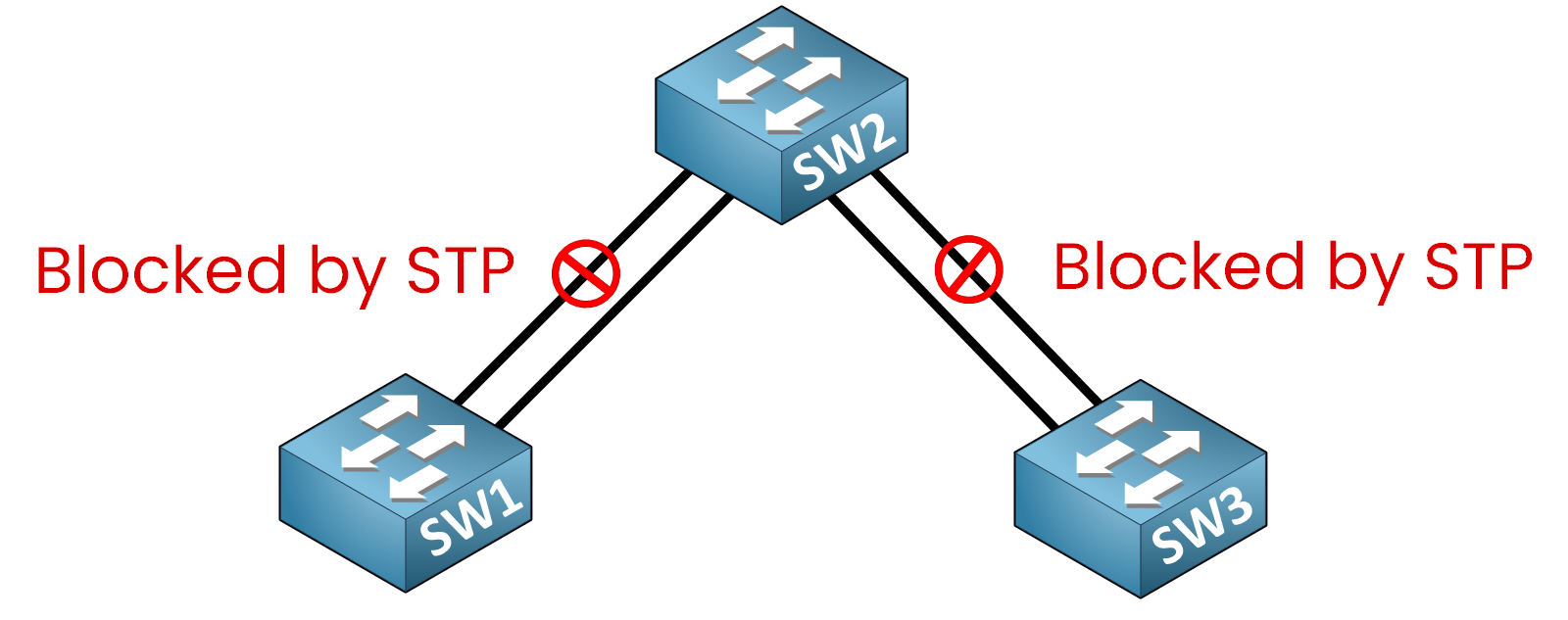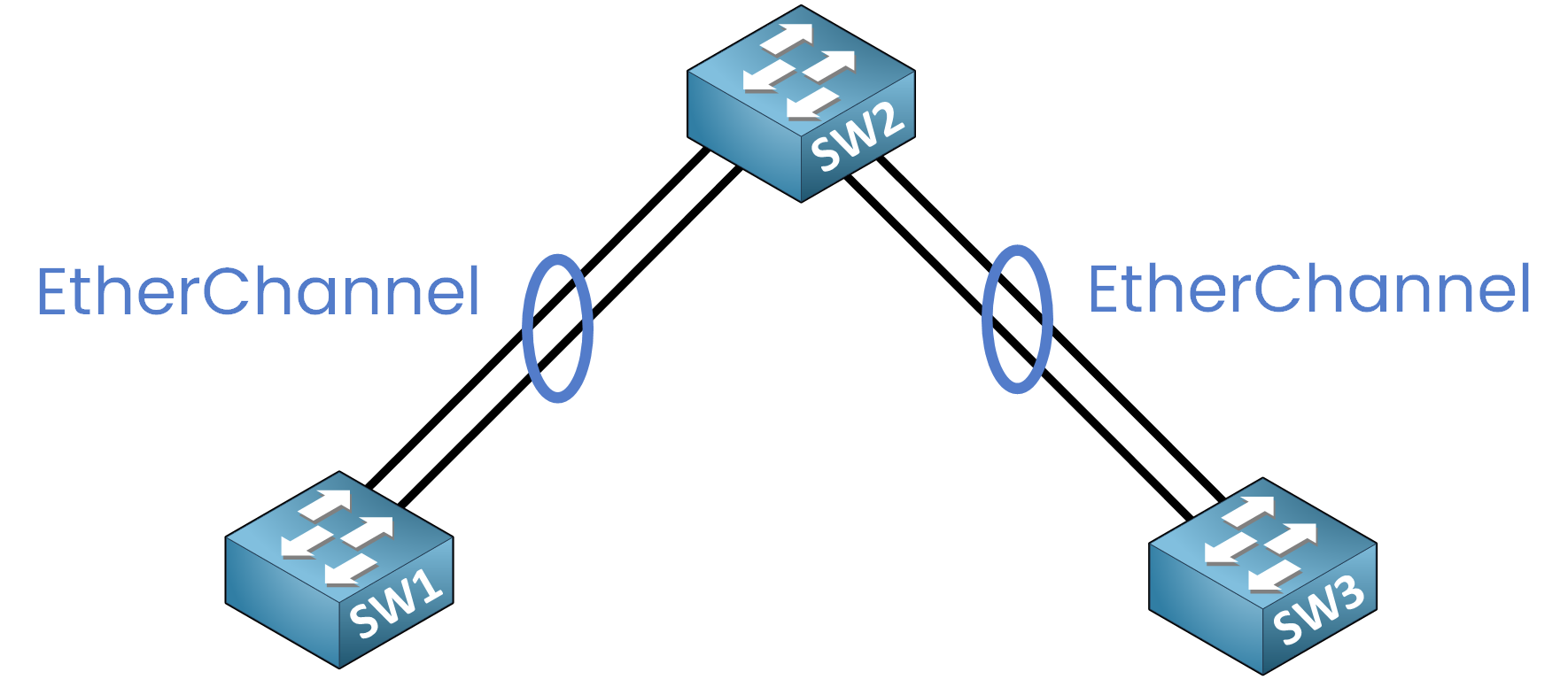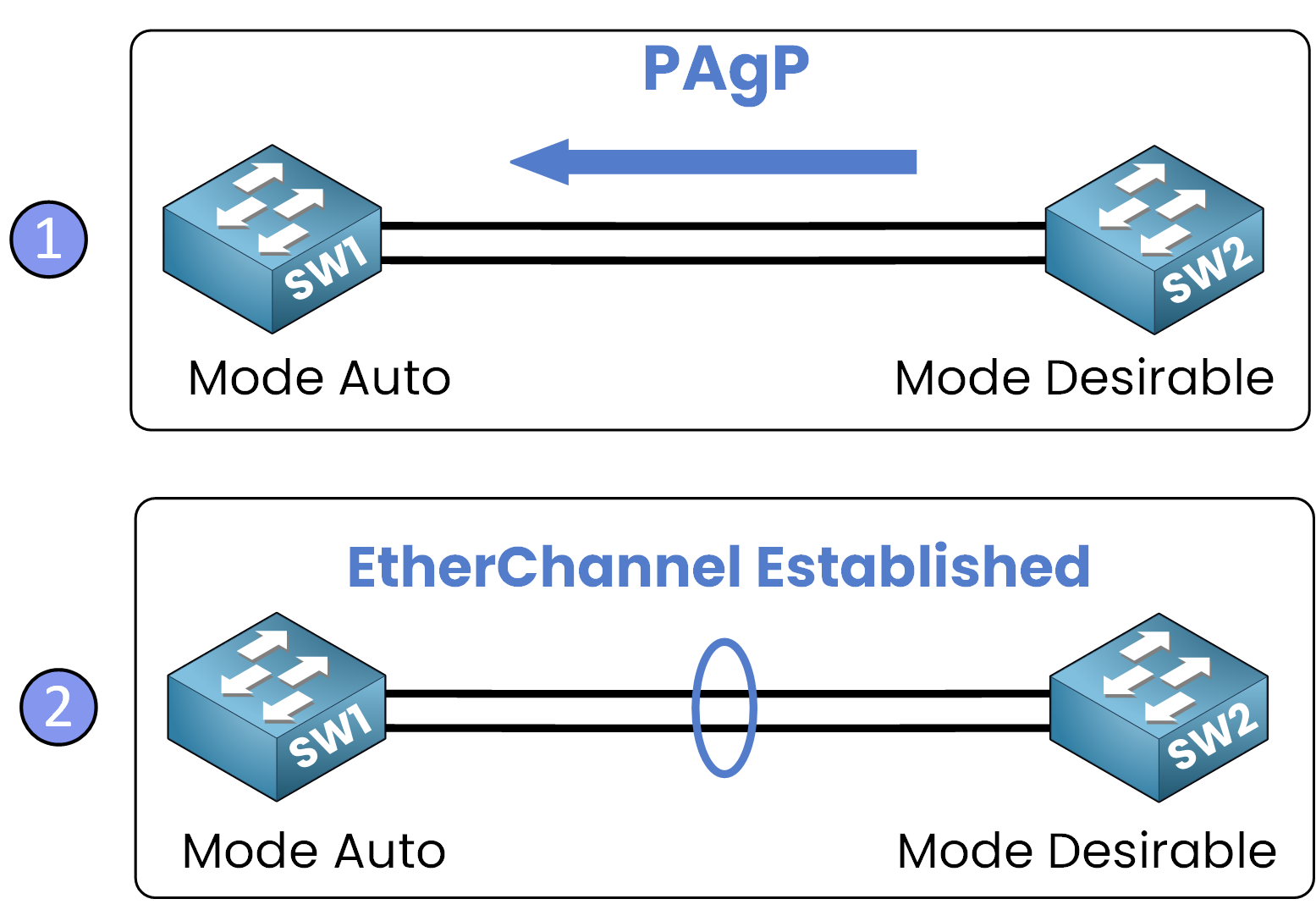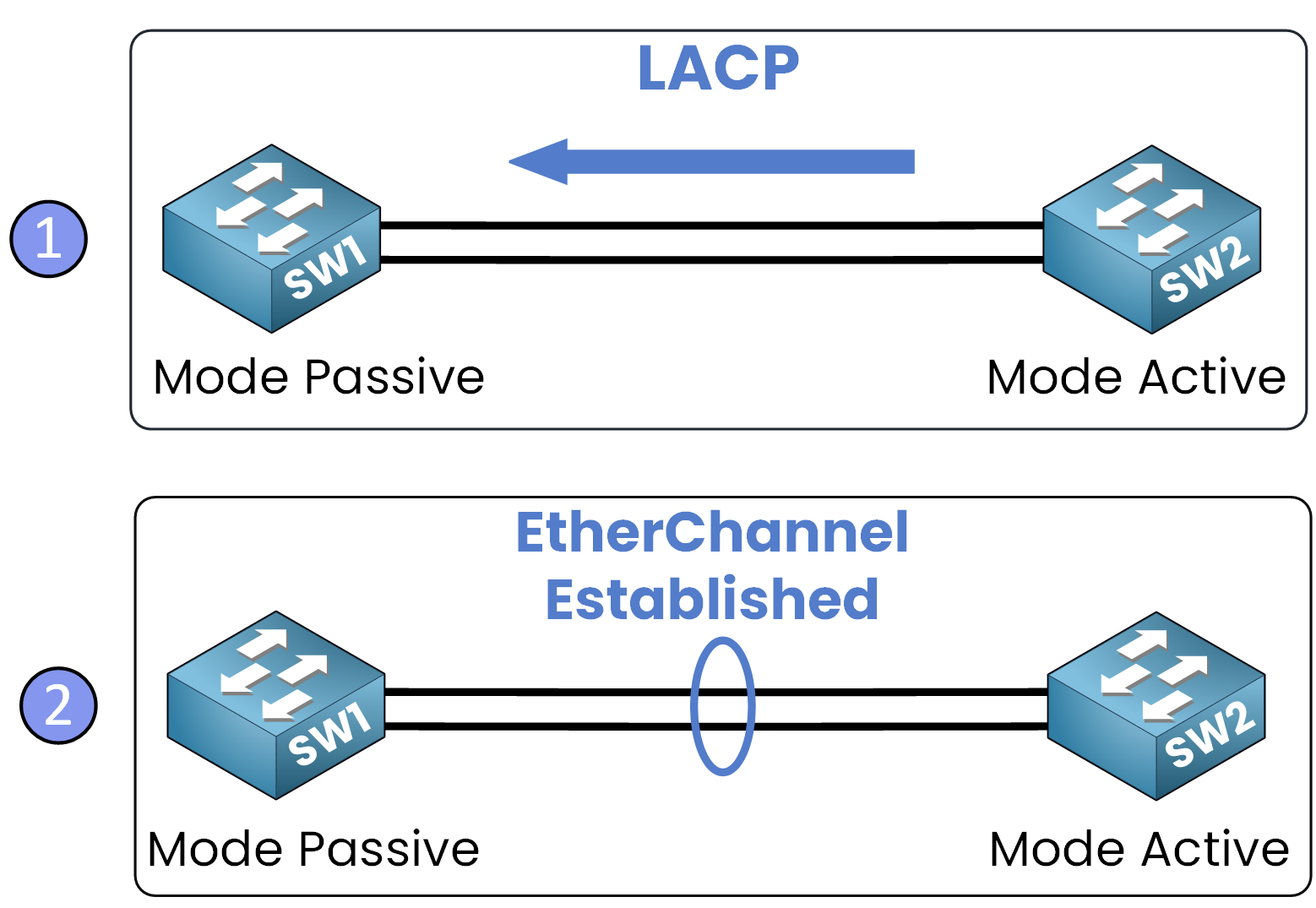In Ethernet networks, multiple physical links between devices may appear to provide more bandwidth and enhance reliability.
But this approach creates a problem. Spanning Tree Protocol (STP) prevents loops by blocking extra links.
Without EtherChannel
When many links exist between switches, STP disables the redundant ones.

Figure 1 – Many Physical Links Without EtherChannel
🔴 Only one link is active.
🔴 Extra links remain idle, wasting available bandwidth.
As a result, more links do not bring any benefits for performance or reliability.
With EtherChannel
EtherChannel solves this limitation by bundling several physical links into one logical channel.
From the perspective of STP, routing protocols, and the switch itself, this bundle appears as a single interface.
Figure 2 – EtherChannel Logical Bundling
✅ All links are active together → providing aggregate bandwidth.
✅ If one link fails, the others continue forwarding → ensuring redundancy.
✅ STP does not block the member links, because it only sees one logical interface.
Answer the question below
Why does STP block extra physical links between switches?
You can configure EtherChannel (also called a Port-Channel) in three ways:
Static EtherChannel (Manual Mode)
Static EtherChannel requires manual configuration without any protocol negotiation.

Figure 3 – Static EtherChannel (Mode On)
Both sides must be configured with explicit settings to bundle the same interfaces.
Port Aggregation Protocol (PAgP)
PAgP is a Cisco-proprietary protocol that automates the negotiation of EtherChannel formation between two devices.
It works by using modes to agree between devices and form the EtherChannel.
Figure 4 – PAgP (Auto / Desirable Modes)
Link Aggregation Control Protocol (LACP)
LACP (IEEE 802.3ad) allows link aggregation between devices from different vendors.
It works similarly to PAgP but follows an open standard and also uses modes to negotiate the bundle.
Figure 5 – LACP (Passive / Active Modes)
We’ll study each method in detail in the next lessons (concepts, configuration, verification).
Answer the question below
Which EtherChannel protocol is the open standard?
You have now learned which function is provided by EtherChannel: it bundles many ports into one logical interface, so STP sees a single interface, improving bandwidth and redundancy.
There are three ways to configure an EtherChannel:
Static: Manual configuration without negotiation.
PAgP: Cisco-proprietary dynamic negotiation.
LACP: IEEE standard dynamic negotiation.
In the next lesson, we will configure Static EtherChannel step by step.
Answer the question below
Which EtherChannel method uses manual configuration without negotiation?
EtherChannel
EtherChannel lets you combine several physical links into one logical channel for more bandwidth and redundancy. In this lesson, you’ll learn why STP blocks extra links by default and how EtherChannel overcomes this limitation.